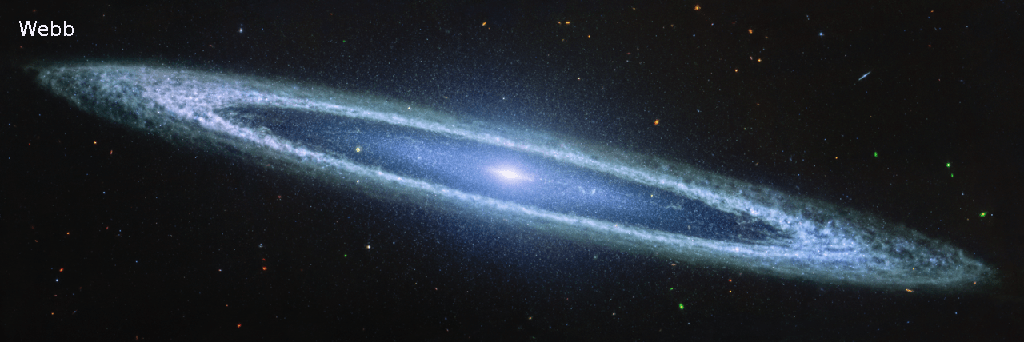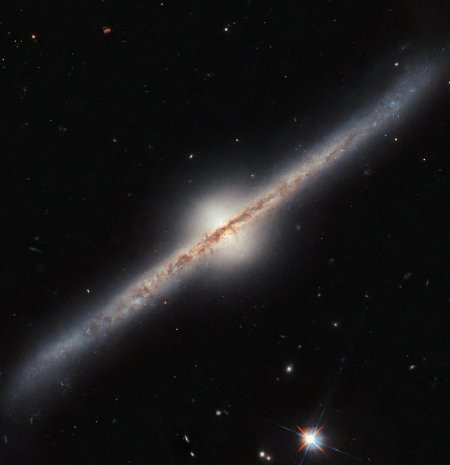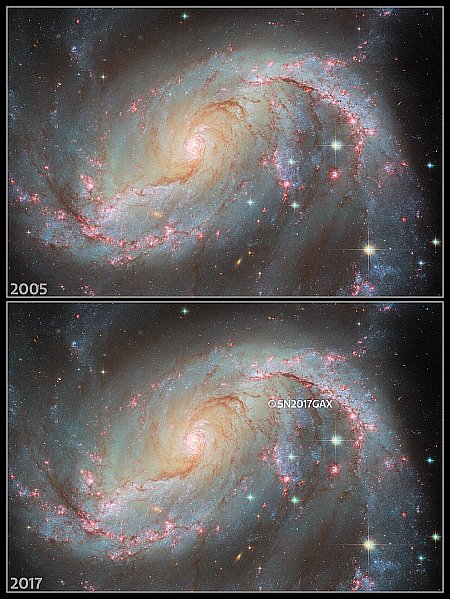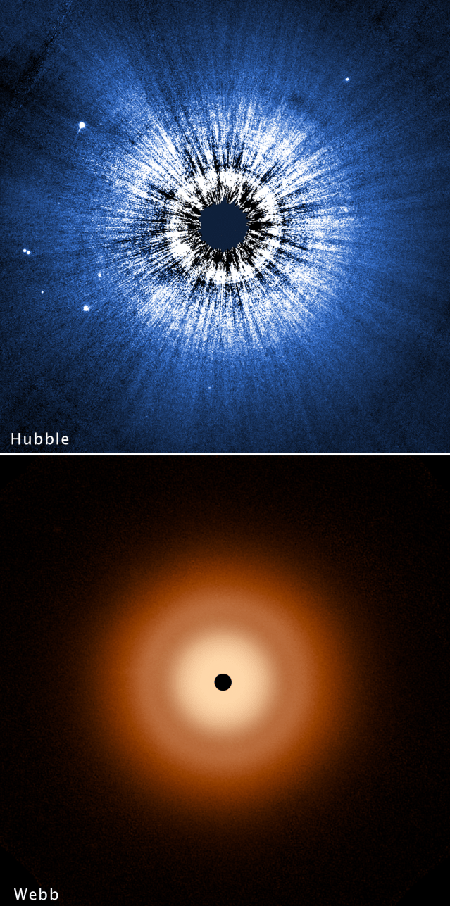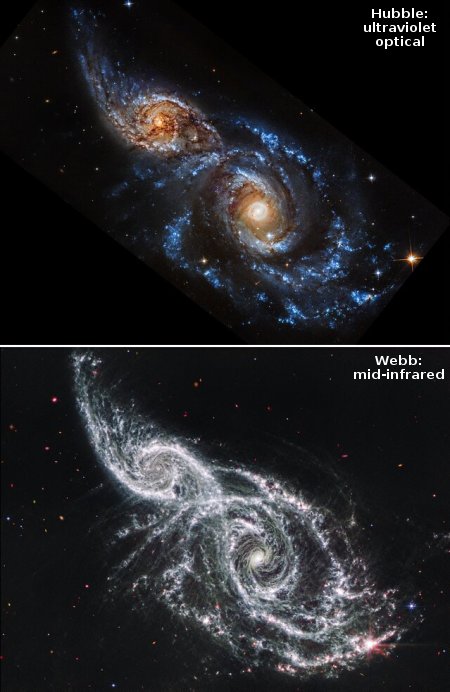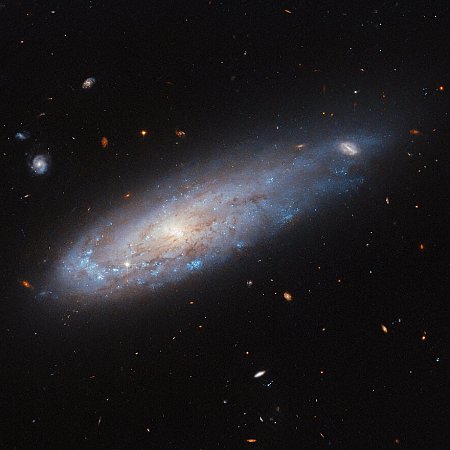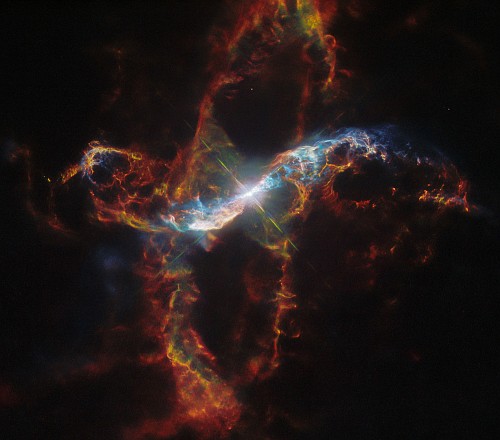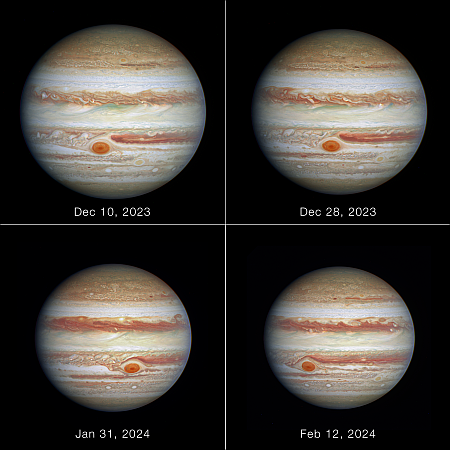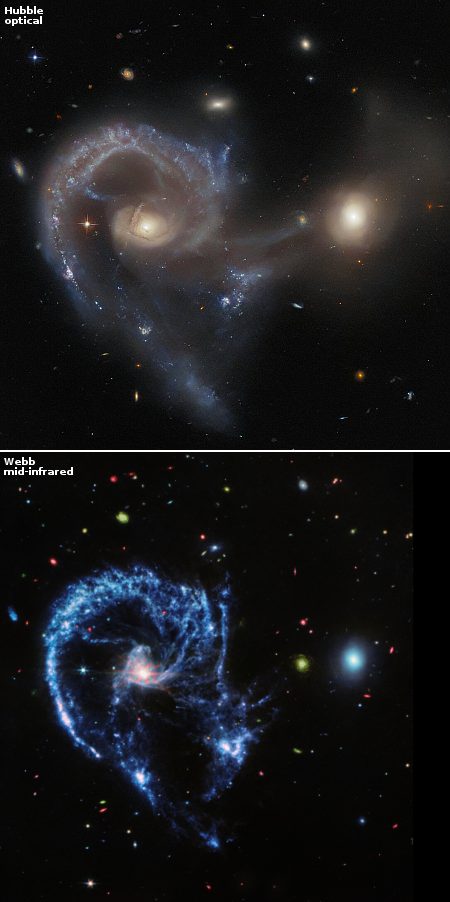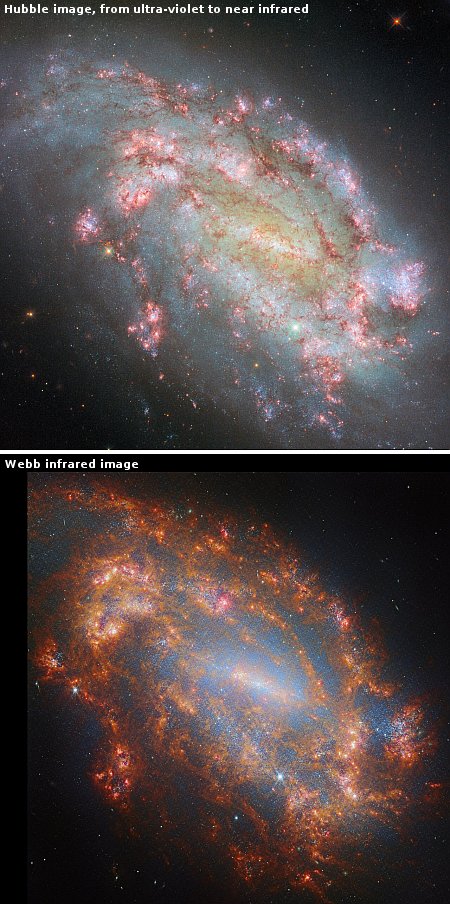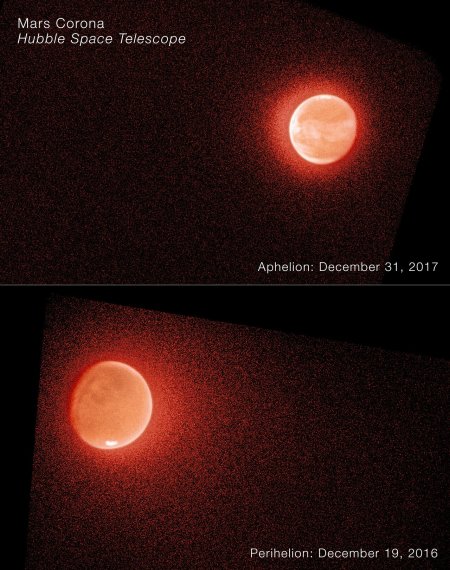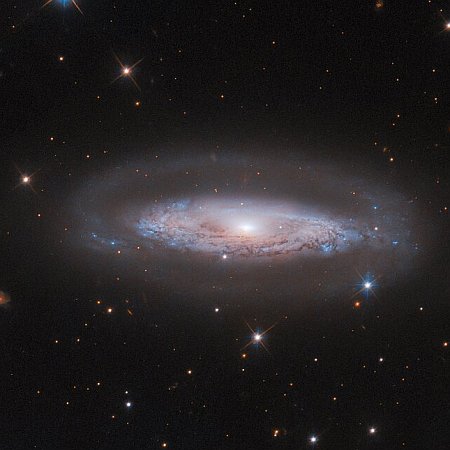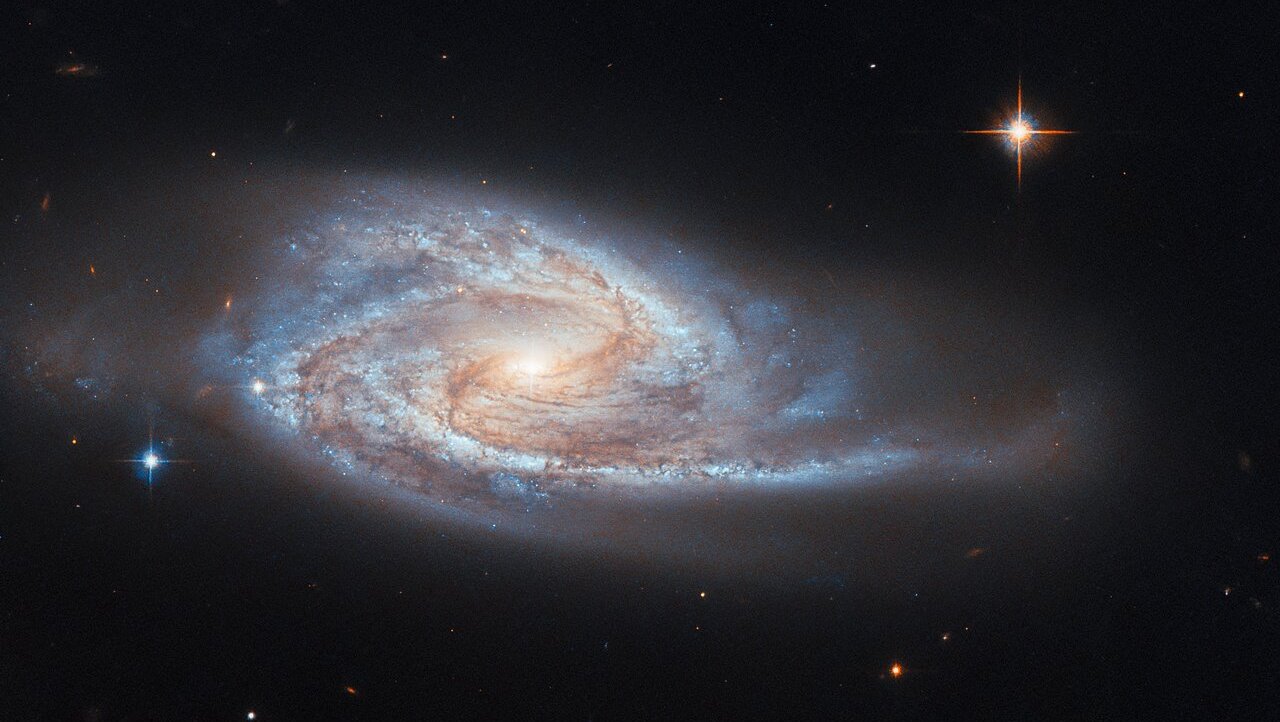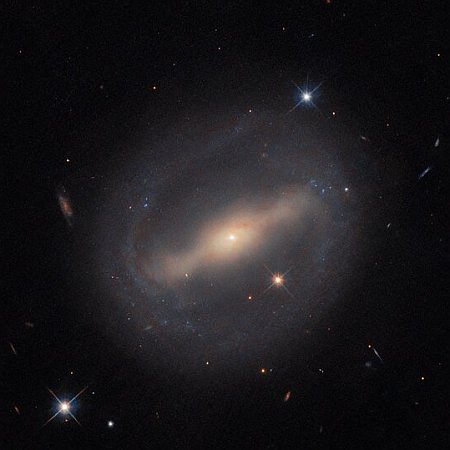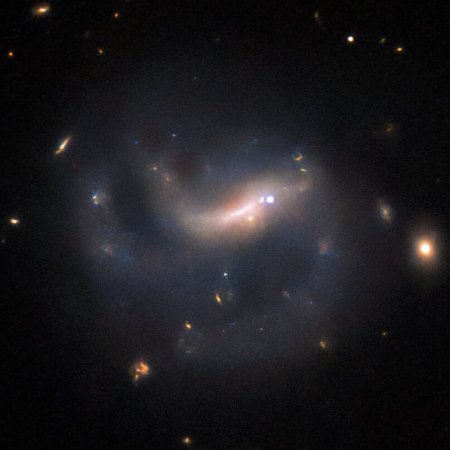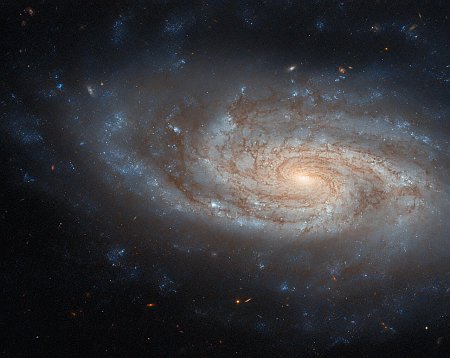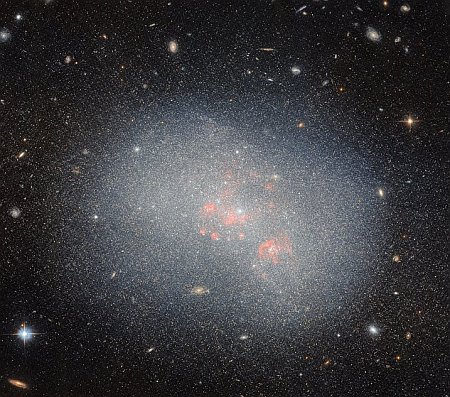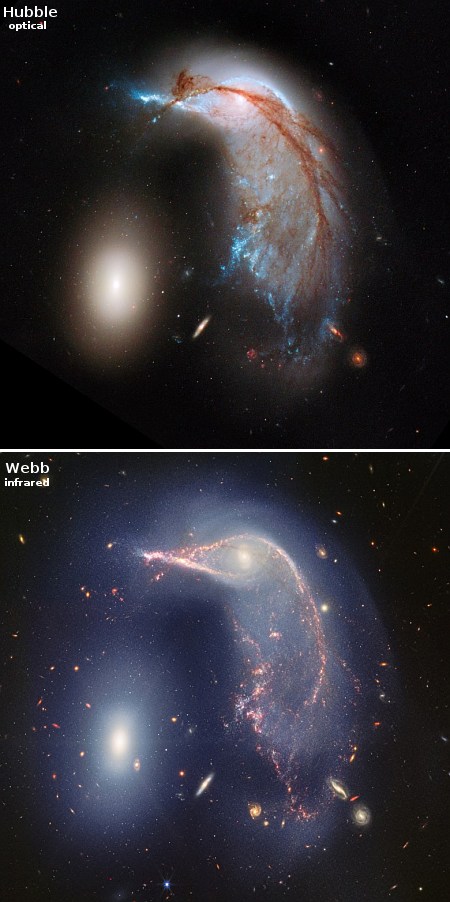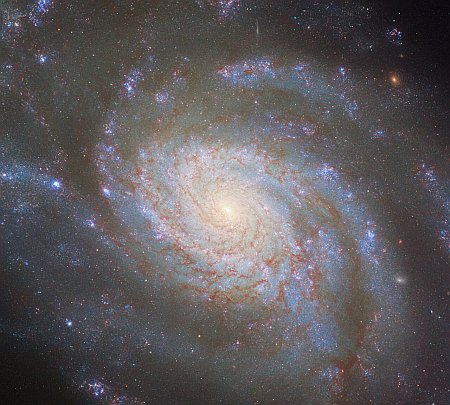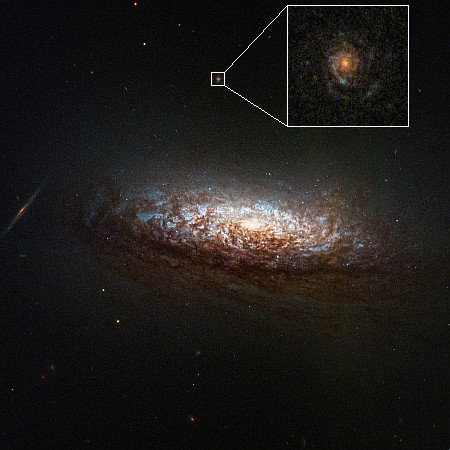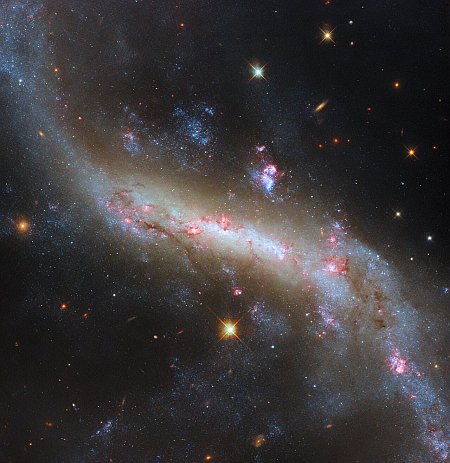Hubble vs Webb, or why the universe’s secrets can only be uncovered by looking at things in many wavelengths
Time for two cool images of the same galaxy! The picture above shows the Sombrero Galaxy as taken by the Hubble Space Telescope in 2003. The picture below is that same galaxy as seen by the Webb Space Telescope in the mid-infrared using false colors. From the press release:
In Webb’s mid-infrared view of the Sombrero galaxy, also known as Messier 104 (M104), the signature, glowing core seen in visible-light images does not shine, and instead a smooth inner disk is revealed. The sharp resolution of Webb’s MIRI (Mid-Infrared Instrument) also brings into focus details of the galaxy’s outer ring, providing insights into how the dust, an essential building block for astronomical objects in the universe, is distributed. The galaxy’s outer ring, which appeared smooth like a blanket in imaging from NASA’s retired Spitzer Space Telescope, shows intricate clumps in the infrared for the first time.
Researchers say the clumpy nature of the dust, where MIRI detects carbon-containing molecules called polycyclic aromatic hydrocarbons, can indicate the presence of young star-forming regions. However, unlike some galaxies studied with Webb … the Sombrero galaxy is not a particular hotbed of star formation. The rings of the Sombrero galaxy produce less than one solar mass of stars per year, in comparison to the Milky Way’s roughly two solar masses a year. Even the supermassive black hole, also known as an active galactic nucleus, at the center of the Sombrero galaxy is rather docile, even at a hefty 9-billion-solar masses. It’s classified as a low luminosity active galactic nucleus, slowly snacking on infalling material from the galaxy, while sending off a bright, relatively small, jet.
In infrared the galaxy’s middle bulge of stars practically vanishes, exposing the weak star-forming regions along galaxy’s disk.
Both images illustrate the challenge the universe presents us in understanding it. Basic facts are often and in fact almost always not evident to the naked eye. We always need to look deeper, in ways that at first do not seem obvious. This is why it is always dangerous to theorize with certainty any explanation too soon, as later data will always change that explanation. You can come up with an hypothesis, but you should always add the caveat that you really don’t know.
By the way, this concept applies not just to science. Having absolute certainty in anything will almost always cause you to look like a fool later. Better to always question yourself, because that will make it easier for you to find a better answer, sooner.
We need only look at the idiotic “mainstream press” during the months leading up to the November election to have an example of someone with certainty who is now exposed as an obvious fool.
Time for two cool images of the same galaxy! The picture above shows the Sombrero Galaxy as taken by the Hubble Space Telescope in 2003. The picture below is that same galaxy as seen by the Webb Space Telescope in the mid-infrared using false colors. From the press release:
In Webb’s mid-infrared view of the Sombrero galaxy, also known as Messier 104 (M104), the signature, glowing core seen in visible-light images does not shine, and instead a smooth inner disk is revealed. The sharp resolution of Webb’s MIRI (Mid-Infrared Instrument) also brings into focus details of the galaxy’s outer ring, providing insights into how the dust, an essential building block for astronomical objects in the universe, is distributed. The galaxy’s outer ring, which appeared smooth like a blanket in imaging from NASA’s retired Spitzer Space Telescope, shows intricate clumps in the infrared for the first time.
Researchers say the clumpy nature of the dust, where MIRI detects carbon-containing molecules called polycyclic aromatic hydrocarbons, can indicate the presence of young star-forming regions. However, unlike some galaxies studied with Webb … the Sombrero galaxy is not a particular hotbed of star formation. The rings of the Sombrero galaxy produce less than one solar mass of stars per year, in comparison to the Milky Way’s roughly two solar masses a year. Even the supermassive black hole, also known as an active galactic nucleus, at the center of the Sombrero galaxy is rather docile, even at a hefty 9-billion-solar masses. It’s classified as a low luminosity active galactic nucleus, slowly snacking on infalling material from the galaxy, while sending off a bright, relatively small, jet.
In infrared the galaxy’s middle bulge of stars practically vanishes, exposing the weak star-forming regions along galaxy’s disk.
Both images illustrate the challenge the universe presents us in understanding it. Basic facts are often and in fact almost always not evident to the naked eye. We always need to look deeper, in ways that at first do not seem obvious. This is why it is always dangerous to theorize with certainty any explanation too soon, as later data will always change that explanation. You can come up with an hypothesis, but you should always add the caveat that you really don’t know.
By the way, this concept applies not just to science. Having absolute certainty in anything will almost always cause you to look like a fool later. Better to always question yourself, because that will make it easier for you to find a better answer, sooner.
We need only look at the idiotic “mainstream press” during the months leading up to the November election to have an example of someone with certainty who is now exposed as an obvious fool.


